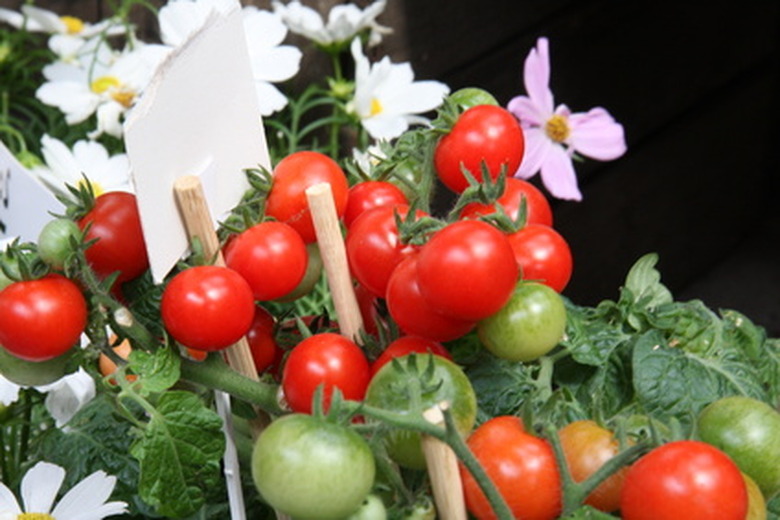How To Grow Creole Tomatoes
Things Needed
- Soil test kit
- Sulfur (optional)
- Compost
- Plant stakes
- Cloth strips, nursery tape or nylon stocking strips
- Fertilizer
The Creole tomato is a medium to large red tomato and is the state vegetable of Louisiana. It grows best in the soil of southern Louisiana, but you can grow it in other parts of the country that have hot, humid summers. The Creole plant produces large numbers of this vegetable, which is said to have a "full-bodied" tomato flavor, good texture and firm flesh, according to Garden Harvest Supply. Expect to harvest your first tomatoes just over two months after you set plants in the ground in spring.
Growing Creole Tomatoes
Step 1
Test the soil where you plan to grow your Creole tomato plant. It prefers a pH between 5.5 and 7.0, or slightly acidic.
Step 2
Dig any type of organic compost into your planting area, using one part compost to about four parts of soil. Then dig a planting hole twice as large as the root system of your Creole tomato. Backfill with your soil and compost mixture to a level that will allow your unpotted plant to sit in the hole with at least 2 inches of room above the base of the plant and the top of the hole. This will create a basin that allows you to flood this tomato when you water it. In March, set your plant into the hole and fill it with additional soil and compost.
- The Creole tomato is a medium to large red tomato and is the state vegetable of Louisiana.
- Backfill with your soil and compost mixture to a level that will allow your unpotted plant to sit in the hole with at least 2 inches of room above the base of the plant and the top of the hole.
Step 3
Stake your Creole tomato plant because it is an indeterminate type, meaning its branches keep growing well into summer. Drive two or three wooden, metal or plastic stakes into the ground around your plant, or use a purchased tomato cage. Tie branches to your stakes or cage with cloth strips, nursery tape or nylon stocking strips to keep fruit off the ground.
Step 4
Water your Creole tomato plant by running a hose in the basin that surrounds it until the basin is flooded with water. Continue to water in this way once or twice a week until your plant begins to flower and set fruit. Then reduce water to encourage maximum fruit production. Depending on the weather, you might need to water only once every 10 days. Wait until the soil appears dry or the plant begins to wilt a bit before you water a producing Creole tomato plant.
- Stake your Creole tomato plant because it is an indeterminate type, meaning its branches keep growing well into summer.
- Continue to water in this way once or twice a week until your plant begins to flower and set fruit.
Step 5
Fertilize your Creole tomato once before it flowers, using a balanced plant food, such as one with a nitrogen-phosphorus-potassium, or N-P-K, ratio of 10-10-10. After it begins to flower and set fruit, switch to a lower nitrogen food, such as 0-10-10, to encourage more tomatoes to form.
Tip
Several different cultivars of tomato are called "Creole." Any medium or large red tomato that is grown in the New Orleans River parishes area can be called a Creole. The Celebrity variety has been grown widely as a Creole, according to the New Orleans Times-Picayune. If you need to lower your soil's pH to make it more acidic, add rock sulfur at the rate of about 4 oz per square yard of planting area. You can also help to lower your soil pH by digging in sawdust, wood chips of any kind, composted leaves, peat moss, cottonseed meal, or a combination of these ingredients.
Warning
Keep the tobacco mosaic virus away from your plant by keeping cigarettes away from it.
